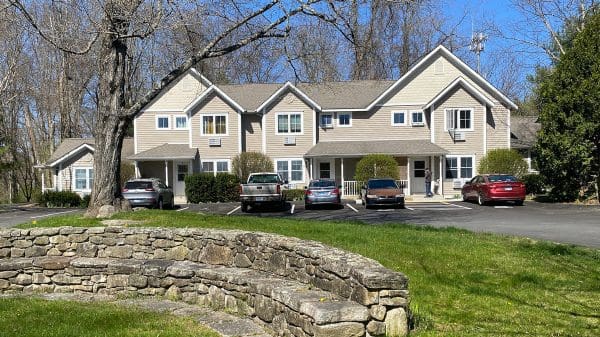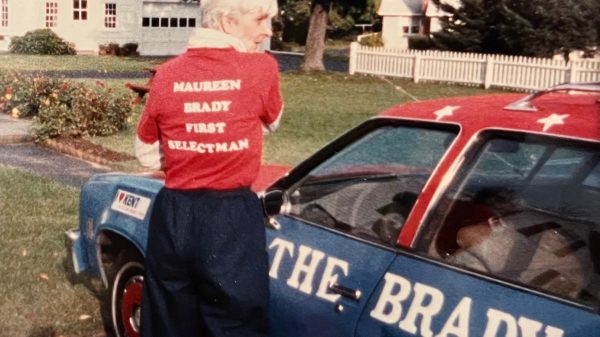KENT—America pays scant attention to its natal day, having ceded its patriotic recognition to Memorial Day and Veterans Day. But not so at the Eric Sloane Museum, 31 Kent Cornwall Rd.

There, the Spirit of ’76 lives on in the legacy established by Sloane, who through his art and his actions celebrated the lives of Early Americans. When he established his museum in 1969, honoring the industry and artistry of Early Republic craftsmen, he decreed that a bell be installed atop the building. That bell was never to be removed and was to be rung every July in remembrance of the Declaration of Independence.
That tradition continues today and Saturday, July 6 the museum enjoyed a steady stream of visitors who marveled at Sloane’s antique tool collection, his art and studio. They then took their turn ringing the bell, just as Sloane wished, vigorously pulling on the rope connected to a cupola on the museum’s roof.
At 2 p.m., an official bell ringing was held following a reading of the Declaration of Independence. Guests are encouraged to ring the bell for two minutes straight.
So passionate was Sloane about ringing bells on the Fourth of July—he saw fireworks as symbols of war and bells as symbols of peace—that he advocated for a joint congressional proclamation, adopted June 26, 1963, to ring bells across America in commemoration of the nation’s independence. The bill was signed into law by John Fitzgerald Kennedy.

“Sloane had read that was one of original ways to celebrate the anniversary,” said Andrew Rowand, curator and site administrator of the museum.
Sloane, 1905-1985, best-known for his idyllic landscapes, wrote and illustrated many books on Colonial tools, architecture, farming techniques, folklore and rural wisdom. Among them was “The Little Book of Bells,” an outgrowth of his “Let Freedom Ring” project.
Inside the museum guests perused the extensive collection of antique tools gathered and arranged by the artist. The collection remains just as he left it, with the same signs he hand-lettered.
“Sloane saw it as an installation, so we don’t change it,” said Rowand. “He didn’t see them as antique objects but rather as objects of art. They are vehicles for telling a story. When you feel how they have been worn by the workmen who used them, it is like reaching back and shaking hands with them.”

In another part of the museum, visitors could see some of Sloane’s original artwork and visit his recreated studio. Rowand said the museum holds residencies for modern artists to make the art wing more dynamic.
A couple of years ago, it had a tattoo artist. “People don’t realize that early New England society, which was agricultural and maritime, was heavily tattooed,” Rowand explained, saying the residency connected an 18th-century art form with the modern age. “I see the residencies as bringing back some of the traditional trades, such as blacksmithing and chairmaking, giving people a chance to see artisans at work.”
The museum was created in 1969 as a collaboration between the State of Connecticut, Sloane and Stanley Works, the Connecticut-based tool manufacturing company, which owned the property and donated the land and paid for the building construction. The iron forge is listed on the National Register of Historic Places and the entire site is a State Archaeological Preserve.
The museum is open Friday through Sunday, 10 a.m. to 4 p.m. Admission is $10 for adults over age 18; $8 for seniors, $5 for youth ages six to 17, with children admitted free. Museum Sundays are held on the third Sunday of each month with free admission for state residents.



























